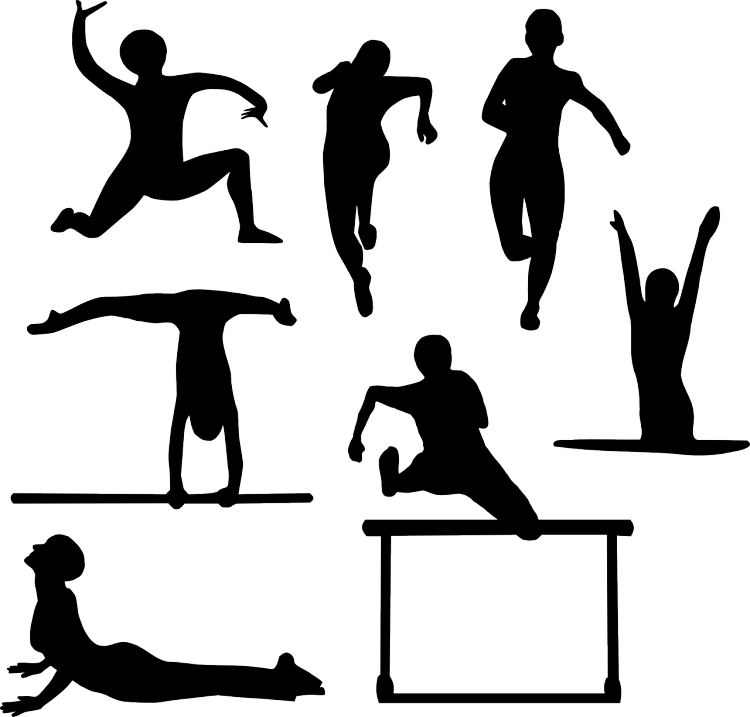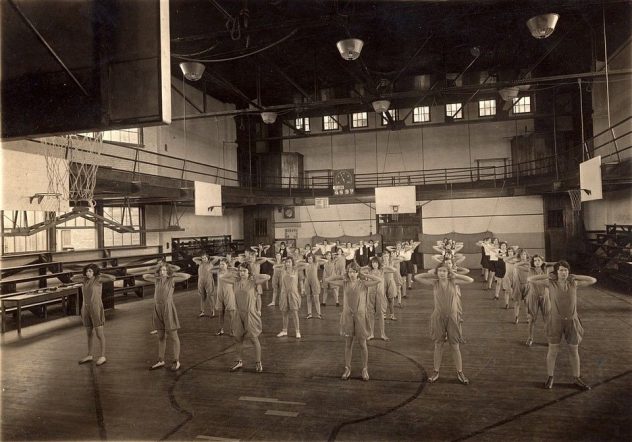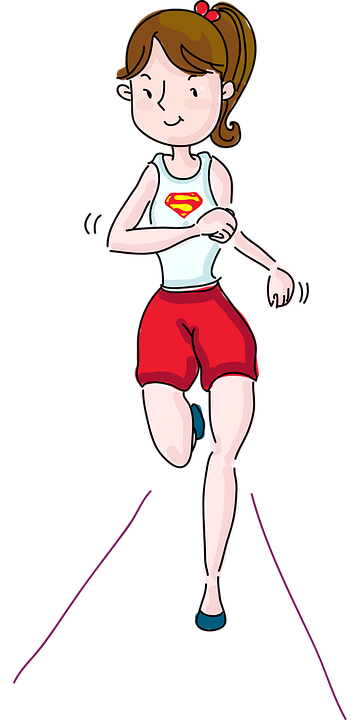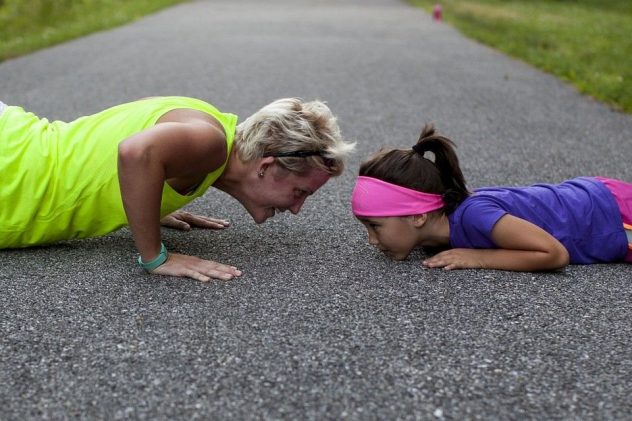By Ryan Braich and Tim Waddington
It’s a tough but worryingly true sort of realization: Physical & Health Education (P.H.E.) can feel acutely unwelcoming for many young students. Happily, a great number of children thrive in the gym, finding a place for personal mastery and self-expression, all while finding an enjoyable outlet for that energy, nervous excitement and natural enthusiasm caused by long-hours sitting in classrooms and one-too-many sugary fruit snacks packed in the daily lunchbox. For others though – and despite our best intentions and thoughtful designs for learning – the gym can also be an environment of intimidation, regimentation, unwanted competition, and social awkwardness.
This is good thing for P.H.E. teachers to keep in mind, given that they themselves typically loved sports, physical activity and dynamic games. Both by natural proclivity and training, they understand the multitude of benefits which attend rigorous physical activity, be that the obvious ones such as growing fitness, strength, endurance and overall health, or those less apparent long-term outcomes centered around team dynamics, leadership, cooperation and personal confidence.
Like anywhere else, P.H.E. comes with its own core competencies. These include topics such as physical literacy, healthy and active living, social and community health, and mental well-being, alongside the development of flexibility, stamina, power, and appreciation of the body’s amazing biomechanics. Each of these deserve to be adequately addressed.
How, then, might we include a strong emphasis upon personal fitness, especially an expanding personal fitness, which supports both individual growth and athletic mastery, while also using Imaginative Education to overcome some of the barriers to participation experienced by those for whom physical activity doesn’t arrive quite so naturally?
Physical Education and Imaginative Engagement
Student engagement matters in P.H.E. as much as it does anywhere else, both in the school and the greater outside lives of children. If we want students to fully participate, build core skills, and continuously increase their well-being and fitness – if we want them to genuinely grow invested in a lifetime of positive habits and healthy behaviours – it seems an obvious sort of idea that we should utilize strategies promoting that positive sense of engagement we most want to see. Play is a natural motivator, we all recognize, as is getting students into teams and having them work toward common, cooperative ends. “Play continually creates demands on the child to act against immediate impulse,” shares Vygotsky. “Ordinarily children experience subordination to rules in the renunciation of something they want, but here subordination to a rule and renunciation of action on the immediate impulse are the means to maximum pleasure.”
But what about the fitness piece? Can it really apply in the same way? Back in the ‘wonder years’ of our youth, many of can recall horror stories about the 12-minute run, sit up and push up tests, climbing ropes and chinning bars. Lest we forget the sense of dread knowing the dreaded beep test was next period and the near sadistic gleam with which the gym teacher would announce, “Time for suicides! Toes on the line!”
If you were good at these, you probably didn’t feel too poorly about them. Success, after all, is naturally motivating and being good at athletics is a sure road to social acceptance in the often unforgiving junglescape of middle-year and secondary physical education. Still, the question remains:
How might we engage students in pursuing fitness and investing in their own long term health and well-being, emphasizing a strong fitness component in every PHE class, all without the dynamics of hierarchical power, unwanted competition and social intimidation?
What follows are some suggestions…even better, ideas that will provoke your own imaginative engagement for instructional design in the gymnasium…
Activity Dice (Fitness Dice)
Equipment needed: Two extra large dice, the more comically large the better
Used during a ‘dynamic warm-up’, where student are to experience 10-15 minutes of sustained elevated heartrate. The use of dice allow for the inclusion of 11 distinct warm up activities (high knees or ‘bum’ kicks across the gym, wall sit, straight planks, etc.). Have each activity listed on the wall/whiteboard beside it’s corresponding number, possibly having students generate the eleven activities to be used. Each time the dice are rolled, it triggers one minute of continues activity of the corresponding physical exercise. Between each exercise, introduce a thirty second rest period, during which a student leader – or a rotation of students – roll the dice to determine the next minute long activity.
Fitness Cards (Test Your Luck)
Equipment needed: One standard deck of playing cards
Another method of ‘dynamic warm-up’, have students generate four exercises, represented by the four suits of playing cards (Hearts, Clubs, Spades and Diamonds). Based upon these four exercises, shuffle the deck and either flip the top card over or get students to choose a card from anywhere in the deck. The number on the card equals the amount of repetitions or increments of time that the students must perform. For example, the six of hearts may indicate sixty seconds of jumping jacks or six times back and forth across the gym, sprinting one direction and jogging back. Over time, face cards, aces and jokers can come to have particular meaning: perhaps the queen means that the girls in class are exempt from the activity, the king means that the teacher gets to choose an alternate activity not on the original list, and the joker means only the teacher must do the activity while the students get to turn the tables! To regulate an appropriate amount of time for the entire warm up period, the teacher could preselect a number cards to be used beforehand (and hide the jokers, if she knows what’s good for her!) or use music as a timer for the entire activity.
Partnered Beep Test
Equipment needed: Speaker with standard beep test audio track
A variation on the standard classic, students will here create their own partnerships, and if there is an extra student, they can have a group of three so that partners one and three run together. Students line up with their partners behind them and alternate runs for the beeps. The first partner begins with the first beep and runs until they finish their leg at/after the second beep, at which point they high-five their partner to switch out. The second partner runs until they the third beep where the partners switch again with another high-five. Broadly stated, the goal is to have the students persevere and cooperatively push each other during a test that is often negatively associated with strenuous activity. By having partners, students are accountable for each other and press each other towards greater achievement, addressing not just outcomes of physical fitness but also social-emotional learning in the process.
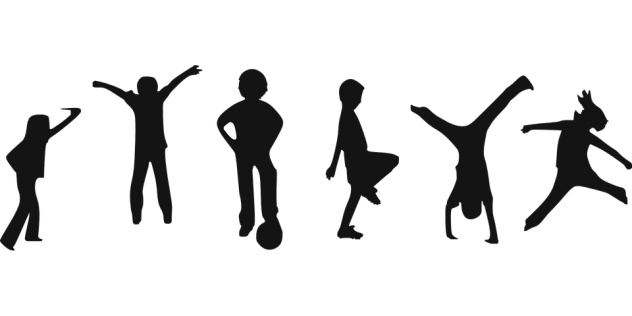 Discussion
Discussion
Why do simple adaptations like these have such tremendous effect upon learning? The answers are both simple and complex, pointedly direct and multi-layered. Might we submit the simple power of imagination and the role of the unexpected in the process of play? Elkonin (1978) suggests that by imitating behaviour in play [here the types of physical activities undertaken by mature, even elite, athletes], children learn to adjust their actions to meet the norms associated with the behaviour of role models, thus practicing the planning, self-monitoring and reflection essential for [later] intentional behaviours. In this way, play becomes, or rather begets, a determination of thinking and learning, and so becomes a leading activity for development. Learning about fitness and health in such a way that engages mind, imagination and body, leads – or at least is more likely to lead – to the development of ingrained personal commitments. Play, it seems, is a serious business. (Have you seen the Play Series on imaginED?)
But so too do we see elements of emotional, imaginative engagement by introducing elements of chaos, the unknown and outright comedy, infusing purposeful physical activity with elements of community and play. The element of chaos – rolling the dice and living with the consequences – breaks up potential monotonies, invoking Change of Context, Jokes and Humour, and Extremes and Limits. Invoking the unknown – flipping cards and appreciating the capriciousness of results – plays upon a Sense of Mystery, Wonder, and occasionally bouts of Revolt and Idealism. Building in elements of teamwork, cooperation and student leadership – partnering physical testing and providing for student interdependence, engages a sense of Rhyme and Pattern, Heroic Qualities and the Humanization of Meaning. The cognitive tools of Imaginative Education are easily accessible when applied to such settings.
The ability of physical & health education teachers to utilize the type of creative, imaginatively engaging elements outlined above into their day to day instruction should be boundless. The point, as ever, is the need to attend to students’ emotional, rather than just physical and intellectual, engagement with the activities of each day. When students are focused on the imaginatively stimulating aspects of the activity – when they experience physical education through the lenses of teamwork, cooperation, dispersed leadership, laughter, enjoyment and play – their engagement with the truly physical, and physically demanding, aspects of the gymnasium should see a parallel increase. Children will be more willing to participate, press themselves and grow. Meanwhile, the potentially negative focus on competition and social stratification should prove, to some extent anyways, ameliorated.
Pedagogically speaking, … good stuff indeed.
Elkonin, Daniil B. Psychologija igry [the psychology of play].
Vygotsky, Lev. Mind in Society: The Development of Higher Psychological Processes, p. 99.
